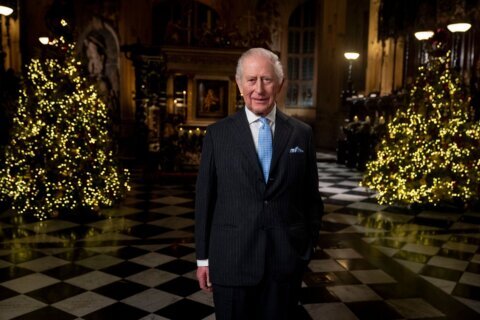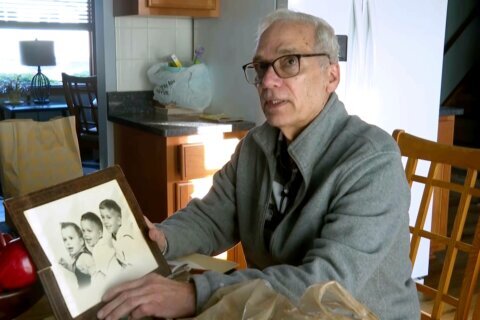Meera Pal, wtop.com
WASHINGTON – A group of young filmmakers is hoping to “shape human history” by harnessing the power of social media.
Since the organization Invisible Children uploaded “KONY 2012” to YouTube on March 5, their video had been viewed more than 30 million times by Thursday morning.
The film launched a campaign called, “Kony 2012,” and the group hopes it will eventually lead to the arrest of Joseph Kony. Kony is the rebel leader of the Lord’s Resistance Army, which has been known to utilize child abduction, rape and intimidation to further its cause in the African country of Uganda. They claim to be furthering the Holy Spirit Movement, which is in direct opposition to the government of Uganda.
The African Union last year formally designated the LRA as a terrorist group, a move that followed President Barack Obama’s decision to send 100 U.S. troops to Africa to advise local forces in their efforts to capture Kony.
It’s estimated that Kony has abducted more than 30,000 Ugandan children to aid in his army. According to Invisible Children, Kony “often forced children to kill their parents or siblings with machetes or blunt tools. He abducted girls to be sex slaves for his officers. He brainwashed and indoctrinated the children with his lies and manipulated them with his claim of spiritual powers.”
“[Kony 2012] aims to make Joseph Kony famous, not to celebrate him, but to raise support for his arrest and set a precedent for international justice,” the mission text for the film states.
The video features images of the Holocaust and the Rwandan genocide and includes the story of Jacob, a Ugandan boy the filmmakers met in 2003 when they traveled to Africa. At the end of their visit, Jacob — whose brother was killed by the rebel army — tells the filmmakers he would rather die than be alive.
Kony 2012 is furthering the promise the filmmakers made to Jacob.
“Our goal is to change the conversation of our culture … and get people to ask, ‘Who is Joseph Kony?'” says director Jason Russell in the most recent video.
Viewers are asked to order the Kony 2012 kit, which includes red string bracelets with unique ID numbers that can be registered online.
The kits also include posters, which are part of a larger movement on April 20 called, “Cover the Night.” On April 20, Invisible Children calls for activists involved in Kony 2012 to take their posters and plaster the walls and surfaces of every city in every country.
“The city will go to bed Friday night and wake up to 100,000 posters demanding justice on every corner,” Russell says.
Watch below the roughly 30-minute video for Kony 2012. The video does include some disturbing images.
“Cover the Night” groups have popped up in many cities across the world. In D.C., Maryland and Virginia, the “Cover the Night” group has nearly 18,000 people listed as attending its April 20 gathering on its Facebook page.
On Toronto’s “Cover the Night” Facebook page, there are plans to blanket the streets in hundreds of thousands of posters.
On Twitter, #StopKony has been trending since the campaign launched earlier in the week.
“It’s obviously an effective campaign because there are people talking about it,” says Mandy Jenkins, a professor in Georgetown University’s Master of Professional Studies program. She is also the former social media editor at Huffington Post.
The question, Jenkins says, is whether the group can sustain the momentum created by the video.
“On social media alone, it’s not going to be very easy to keep it going very long,” she says. “There’s so much new stuff coming out on social media every day.”
Jenkins says Invisible Children is not the first campaign to use social media to spread a message of change. She points to the days and weeks following the Haiti earthquake, and more recently, the controversy surrounding Susan G. Komen when a high-ranking Komen officer resigned due to pressure from a social media campaign.
“The reason why it does effect change isn’t because of the huge amount of people using social media,” she says. “Those people who are on Twitter tend to be people who are very plugged in and very social or have large social networks of their own.”
It’s for that reason Kony 2012 is targeting a key group of what they call “culturemakers” and “policymakers” via Twitter, Facebook and a letter-writing campaign.
The campaign also has stirred up controversy surrounding Invisible Children, with questions about its finances and methods — along with the current location and impact of Kony — taking on a viral life of their own. On YouTube, the video had garnered nearly 27,000 dislikes.
“This is probably a ‘white man to save the Africans’ concept and the spread of the film bears witness to an extremely low level of knowledge among people,” says user “stoofn93.” “It is sad that it gets such attention.”
The blog Visible Children alleges Invisible Children spent more than $8.6 million last year with only 32 percent spent on direct services. They argue that a majority of the money has been spent on staff salaries, travel and transport, and film production.
Another blog notes, “Social media allows making anything viral, quickly. People often do not look into the substance of the message, or even watch the video you are sending. Once you become a brand, you can do anything. Invisible Children has successfully become a brand, but is sharing information that is far from nuanced and based on emotional reactions. It fails to paint the full picture.”
On its own blog, Invisible Children addresses the criticisms surrounding the organization and the Kony 2012 campaign.
“Let’s focus on what matters, and what we DO agree on: Joseph Kony needs to be stopped,” the group says. “And when that happens, peace is the limit.”
Follow WTOP on Twitter.
(Copyright 2012 by WTOP. All Rights Reserved.)







